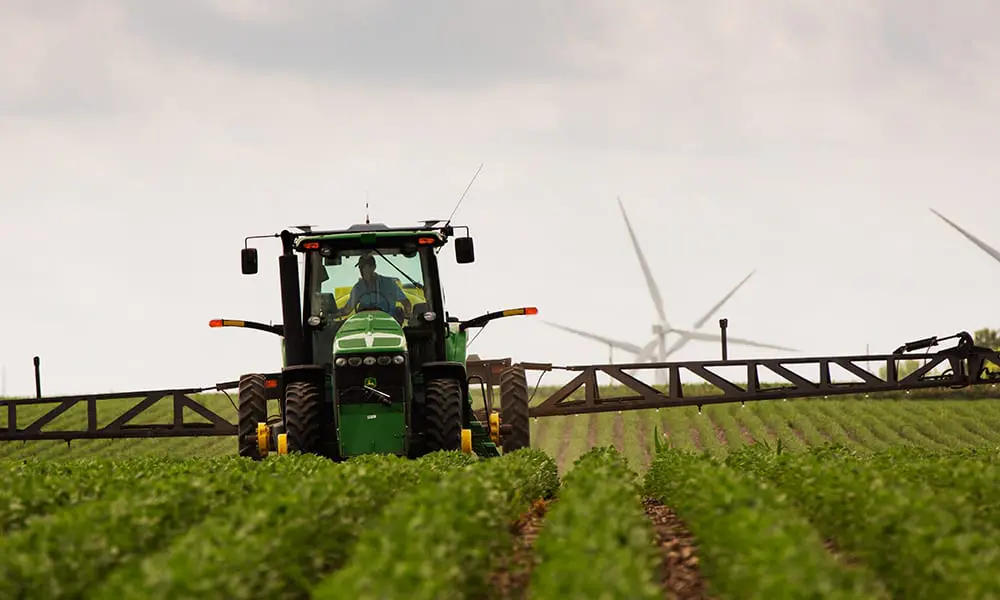 After a very slow start to the planting season, we finally have had the best soil conditions of the spring in our area of Ohio, on the eastern side of the U.S. Midwest. And we’ve taken advantage of those conditions.
After a very slow start to the planting season, we finally have had the best soil conditions of the spring in our area of Ohio, on the eastern side of the U.S. Midwest. And we’ve taken advantage of those conditions.
We finished planting most of our soybeans on June 13. We were able to spray the cover crops before planting. And then, we finished applying herbicide for post-emergence weed control just four days later. We are very cautious about when we apply herbicides, waiting for weather conditions that won’t create any problems for our other crops for our neighbors. We also check with our neighbors to know what types of herbicide-tolerant crops they plant next to our fields.
This year, our early planted soybeans were about 25 cm, or 10 inches, tall when we applied herbicides for weed control. Our later-planted soybeans were just 5 to 10 cm, or 2 to 4 inches, tall when we finished with weed control.
The only field we have left to plant is our food-grade research soybeans being shipped from Argentina. They took much longer to get to us than expected, but we expect to have them this week and plant them immediately. Fortunately, they are a shorter-season soybean, Group 2.8, so they will still have plenty of time to make a good crop.
 We also finished planting our corn on June 3, and it has all emerged with a nice, even stand. Now we are getting ready to side-dress our corn with nitrogen fertilizer. We use a liquid form of fertilizer called UAN 28%, which contains 28 percent nitrogen. We have two different applicators, one that knifes the fertilizer into the soil and one that dribbles it on top. Both methods make nitrogen more readily available to the corn to help it grow. This year our corn has gotten a normal start, which is good given our cool, wet spring.
We also finished planting our corn on June 3, and it has all emerged with a nice, even stand. Now we are getting ready to side-dress our corn with nitrogen fertilizer. We use a liquid form of fertilizer called UAN 28%, which contains 28 percent nitrogen. We have two different applicators, one that knifes the fertilizer into the soil and one that dribbles it on top. Both methods make nitrogen more readily available to the corn to help it grow. This year our corn has gotten a normal start, which is good given our cool, wet spring.
We have been watching for pests, especially where our cover crops got bigger than expected. We found some armyworms, a type of larval insect that becomes a moth, in some cornfields. I’ve only had a problem with them one other time in all my farming experience. We don’t plan to treat them because the corn should be able to grow out of the damage. Their lifecycle is relatively short, so by the time we see them, they are nearly done doing their damage.
We also made hay in mid-June. We mow the grassy mix in our hay fields and let it cure for three days before baling it. We bale our first cutting of hay into large round bales that weigh between 450 and 550 kg, or between 1,000 and 1,200 pounds. We expect to get a total of two or three hay cuttings each year, depending on the weather. Most of it is used to feed the beef cattle my son-in-law raises, though we do sell any extra. We also bale hay for a neighbor who raises cattle.
We have a little bit of winter wheat that we expect to harvest in early July. In the meantime, we are cleaning and repairing all the equipment we’ve been using as we wrap up spring fieldwork.

